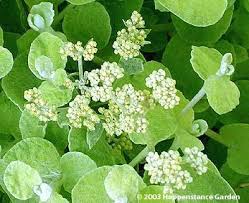 Licorice (or Kalisse Wood) are pieces of the rhizome of Glycyrrhiza glabra. In Greek literally meaning: sugar carrot. (Labra means ’bald’). There are 12 species. The sweetener in the root is 30 to 50 times stronger than sugar. The juice of the root is boiled and thickened to block Drop: hard blocks of pure licorice. Which can be further processed with sugar, gelatin and ammonium chloride (salt). After processing in a licorice only 3% block drop remains in the popular candy!
Licorice (or Kalisse Wood) are pieces of the rhizome of Glycyrrhiza glabra. In Greek literally meaning: sugar carrot. (Labra means ’bald’). There are 12 species. The sweetener in the root is 30 to 50 times stronger than sugar. The juice of the root is boiled and thickened to block Drop: hard blocks of pure licorice. Which can be further processed with sugar, gelatin and ammonium chloride (salt). After processing in a licorice only 3% block drop remains in the popular candy!
The plant comes from warm regions of South (East) Europe and the Middle East where she grows on banks. Licorice is also in our region a hardy perennial, which belongs to the family of Leguminosae (Papilionaceae). The plant is 1 to 2 meter tall and blooms from the later spring with typical butterfly flowers in bunches with a light purple - blue color.
The roots are harvested after three years.
Previously we had a stick soaking in a bottle of water to make klis-juice. With a lot of shaking and foaming. This can also with the powder (sawdust).
It is sometimes also used in heavy beers.
Nibbling a stick helped me years ago to quit smoking.
Natural sweeteners
In cakes you can use raisins, currants, (dried) apples… as a sweetener.
In yogurt ripe stone fruit or redcurrants and blue berries.
In soup and puree: carrots, parsnips, celeriac.
And of course, honey, sugar, stevia.
Aspartame (E951) is a known artificial sweetener that is 160 to 200 times sweeter than sugar, and is widely used in ’light’ products.
